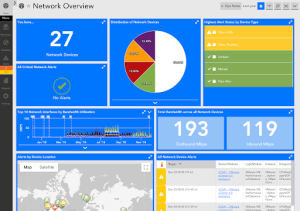File processing is a highly effective method for batch processing of data. It is cost-effective, scalable, secure, and easy to use. It can be used by many types of organizations, and it can be customized to fit the requirements of a specific business. These advantages make file processing systems ideal for businesses.
Cost-effective
File storage is a simple task for the average PC user, but can be very expensive for enterprises. Because businesses produce more data than the average consumer, they must ensure that these files are kept in a safe place. One of the fastest growing segments in storage technology is backups. In fact, backups have outperformed virtualization, SAN solutions, and cloud computing in popularity.
Easy to use
File processing is the process of storing data. These files are then organized to produce usable documents. In most cases, file processing requires the user to specify the name of the file. This can be accomplished by using string variables. In addition, most classes used to create streams will accept a file’s name as a parameter.
A file processing system is a computer system that stores data. Each department in an organization has its own set of files. Because of this, records within a department may not relate to those of another. In addition, multiple files can contain the same information. Duplicate data wastes storage space and resources and increases the chances of errors. Additionally, sharing data between files can be a complicated process requiring computer programming expertise.
Scalable
File processing systems have a variety of scalability advantages. These include being able to scale up without compromising performance and maintaining performance levels over time. The ability to handle a large number of files on a single server has its advantages. Scalability upward is easier than scaling down, but the developers must make good use of the system resources when they are first coding. This is because scaling downward will require them to achieve results in a constrained environment.
When a company needs to increase the size of its infrastructure, scalability is essential. With a scalable infrastructure, the company can add more nodes and disks without the need to replace the entire system. Additionally, this type of infrastructure allows the company to scale as its customer base grows without having to undergo a major infrastructure transformation.
Secure
In an exemplary implementation, a processor receives a request to securely process a file from an untrusted client process. The processor transparently redirects the file management operation to the file content, which is located in the sandbox of the untrusted client process and inaccessible to other applications. The processor then shares information associated with the file using a shared data store.
As shown in FIG. 2, a secure file processing apparatus 410 may include a memory MEM_2 for storing the untrusted client process 328, and one or more processors 304 that operate in accordance with the present invention. The system may also include a server 312 that establishes a secure network communications link with the untrusted client process 328.
The process of securely processing a file may begin with a request from the untrusted client, which may include a request to establish a communications link between the secure network and the untrusted client. It may also be initiated via a user request, such as clicking on a GUI button to initiate the secure processing. Alternatively, the process may be initiated programmatically.
Disadvantages of File Processing
One disadvantage of file processing is that it creates multiple copies of the same data, increasing the risk of data being out of date. For example, if a student’s name changes, all the related departments need to be updated with the new information. This can make it difficult to supervise a department as well as find anomalies in the data.
Traditional file processing is good for small organizations
A traditional file processing system has several advantages over other types of systems. It can be less expensive and easier to maintain. However, it doesn’t store data as efficiently as a database. Additionally, it is not secure. This makes it less suitable for large organizations. However, it is a good choice for smaller organizations with relatively few records to manage.
Another advantage of a traditional file processing system is its ease of access. It’s easier for people to find files that they need by going to one central location. The traditional approach also allows users to easily search and innovate. However, it’s hard to maintain a system that requires a lot of labor.
Before the advent of computers, organizations maintained their records using a manual file system. Individual files contained information related to one function. These files were arranged in such a way that any change made to one file would affect all the other files. Additionally, because there was a different program for every application, modifying one file required modifying the entire system. This process was prone to error and limited flexibility.
DBMS approach is better for large organizations
A database management system (DBMS) is a software application used to store and retrieve data. It offers an API that enables applications to create and retrieve database objects, manage permissions, and secure access to data. It is also used to help store data from third parties. DBMS typically consists of multiple files called tables, which are designed using C/++ or COBOL language. It can support multiple languages and may use additional components to enhance functionality.
DBMS helps to centralize data, allowing users to make better decisions. For example, marketers will have better access to data that can help them make more informed decisions. As a result, their productivity will increase. Furthermore, data storage is easier to manage and retrieval is faster.
DBMS is a powerful tool that allows multiple users to access data and manage permissions. A DBMS also provides a secure way to back up and recover data in case of a breach. It also records every change made to data. It provides a log manager to manage knowledge records, and interfaces with database utilities. In the end, a DBMS and a specialist work together to provide a more efficient way to manage data.
Another benefit of a DBMS is the fact that it provides a centralized view of data and can be accessed by multiple users in different locations. Furthermore, a DBMS also allows users to restrict which data they see and how they view it. This allows users to easily add or remove new categories of data without disrupting the existing system.
DBMSs are more flexible than file systems. File systems can cause duplication and make it difficult to share information. However, a DBMS allows the users to share and access information quickly. File systems can also cause problems with concurrent access. DBMSs can also provide crash recovery, a feature that is necessary when a system crashes.
Data redundancy
Data redundancy refers to the occurrence of data in multiple files. For example, student and library information may be duplicated in several files. These files may contain the same name, role number, room number, and any books rented by students. Due to data redundancy, storage space is increased.
However, data redundancy can also be a problem. It consumes server storage space, which can negatively affect performance. Furthermore, when data is stored in multiple locations, it is difficult for users to differentiate one piece from another. This can lead to corrupted reports and analytics. The use of redundant data should be done only when absolutely necessary. In some cases, data redundancy can be beneficial.
File processing systems provide data redundancy for a variety of reasons. One of the most important reasons is speed. By eliminating the need to store the same data in two places, you can access it more quickly. This is especially important for organizations that deal with customers. Another reason data redundancy is advantageous is that it allows double checking data.
Data redundancy is a critical component of data security. Redundant data provides a failsafe for storage arrays in the event of a loss or disaster. Because redundant data is stored in two or more locations, it offers a high level of data protection. The redundant data is stored on different systems, which can be either local or remote. This ensures that data can be recovered with minimal downtime.
Data inconsistency in file processing system
In a file processing system, data inconsistency can occur when different copies of the same data exist in the same file. For example, a student’s address is stored in a file named Student, but there is also a file called Student_Report. When the program prints a report for a student, it searches the Student file for that student’s address, but in the file Student_Report, it stores the report. If the student’s address changes, the program will no longer mail the report to them. This is known as data inconsistency, and it is the result of a flawed file processing system.
This issue can be resolved by ensuring that data is consistent across all files. The same file can store data in different formats, but it must match all data for consistency. This is often difficult, especially if data is redundant. Redundant data, such as duplicate names and addresses, can compromise data integrity. In these cases, it can be extremely difficult to correct. Data integrity is important because it ensures that the data you store accurately reflects the “real” world.
One of the benefits of database management over file processing is the ease of centralization. A file processing system does not have the same security features as a database, and it is difficult to centralize the system without a database. However, a DBMS system offers more security, better backup, and easy recovery.
File processing systems are a good solution when you only need to handle a small number of files or data. However, when the number of files or data grows, a file processing system becomes a hindrance. In addition to being cumbersome, file processing systems also have a tendency to become difficult to maintain. Furthermore, it can be expensive to develop new applications that utilize the system.
Lack of data security
A traditional file processing system lacks data security. The file system is prone to data redundancy, which is a problem because multiple copies of the same data increase the chances of unauthorized access and inconsistency. Furthermore, program-data dependence limits the flexibility of the system and causes problems with data sharing.
To avoid such a situation, it is important to ensure the security of data. A good data security plan requires a secure access plan and a backup of the data. The backup data must be stored in a separate format. Moreover, the storage devices must be physically secure. Otherwise, insiders can access them and bypass the network-based security measures. To ensure the safety of data files, organizations should use password-protected access and encryption technologies.






